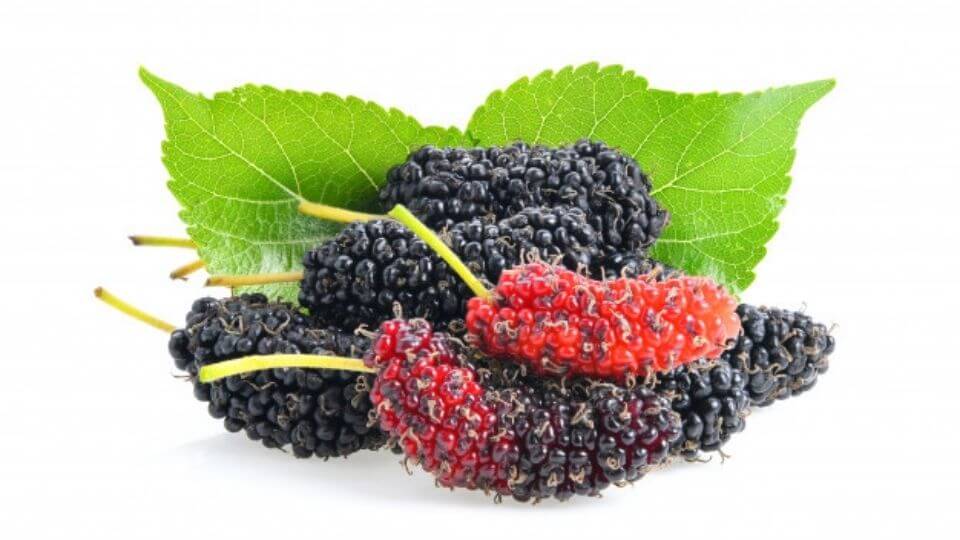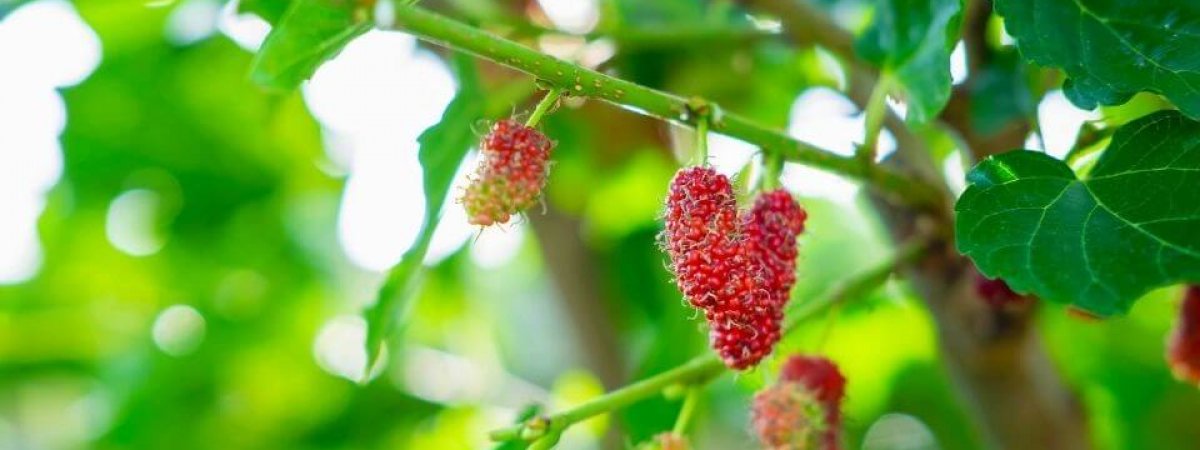Mulberry, one of the fast-growing temperate trees, bear mouth-watering fruits that are eaten raw or used to make pies, wine, and preserves. Mulberry trees produce fruit every year and yield the best fibres known to man – silk.
You can grow mulberry at any site with soil and high-quality animal fodder. The trees earlier gained popularity as an ornamental shade and its delicious edible fruit. Do you want to understand how to grow mulberry trees?
In this blog, we have brought you all the details of growing mulberry trees in your garden.
Growing Mulberry Trees
As aforementioned, mulberry can be grown in any place with high-quality soil, but you still need to take care of a few things. Read on!
Things to consider before growing mulberry trees
Weather conditions: Mulberries grow well in a wide range of climatic conditions, specifically in warm temperature. However, the fruit tree also thrives in Mediterranean, tropical, and sub-tropical regions as evergreens.
Soil: Mulberry trees like to grow in the company of moist, warm, well-drained loamy soil. If these parameters don’t suit your garden soil quality, you should know about its compatibility with coarse, medium and fine soils. The tree is tolerant of a pH range of 5 to 7.
Planting site: Mulberry trees are tolerant of drought, wind, partial shade and cold, which makes their adaptable nature evident. Not just this, the fruit tree is also tolerant of salt soon after being established.
While choosing the right location to grow mulberry trees know that the fruit fall can continue for 6-8 weeks and harvesting mulberries won’t be possible once mature. SO, choose a place where the fruit fall will not look stupid.
The mulberry trees grow large and contribute to casting a heavy shade on reaching maturity. You must consider this too while choosing the location in your garden/backyard.
Pollination or fertilization: Some mulberry cultivars produce higher yields when you allow cross-pollination. However, the monoecious types (more on the mulberry varieties in the next section) don’t require cross-pollination in the first place.
Choosing the right mulberry variety
From the following varieties, choose one that fits well into your garden or backyard:
Black mulberry: These varieties are best grown in the hardy zones 6b in the USDA. Black mulberry trees are least cold tolerant and grow to a height of 30ft with a width of 35ft. These are the smallest cultivars of mulberries that are capable of producing fruit for over 100 years!
Red mulberry: These are best grown in USDA zones 4 to 8. The average height of red mulberry trees is 35ft and their width extends to 50ft. Red mulberry can survive for almost 75 years.
White mulberry: This one is a variety that is most cold-tolerant and thrives in USDA zones 3b to 9. With an average height and width of 30ft and 80ft, these varieties are the fastest-growing cultivars. White mulberry continues to live for up to 75 years.
Note: Mulberry trees are deciduous. White mulberries drop their leaves in spring, almost two months early than red and black mulberries.
Spacing mulberries
- While growing mulberry trees, remember to space them almost 35-50ft apart.
- In case you are growing the dwarf varieties, keep a space of 8ft; for semi-dwarf mulberry trees, space should be 10-12ft.
Planting mulberry trees

- You should plant bare-root trees after the onset of spring soon after the soil is ready to work upon, and the trees are dormant.
- If you are looking forward to growing mulberry trees in a container, plant them during early summer or in spring before the dry weather hits your region. The same goes for balled and burlapped trees.
- In regions with mild-winter weather conditions, mulberries can be planted in the fall season.
- You must prepare a planting site in bright and full sun. They should be sheltered from a prevailing wind or breeze.
- Start by working the manure or well-rotted compost into the soil.
- Now, dig a hole half again as deep and twice as wide as the root of the trees.
- Add a cup of all-purpose fertilizer to the base of the hole.
- Place the tree stack in the right position before planting. The stake should be kept in the ground 2feet deep on the side of the hole.
- Take the plant and set it in the hole to ensure the soil mark of the nursery pot levels at the surface level, or a couple of inches deeper as compared to the surrounding soil.
- Remove all the burlap and twine from the burlapped and balled trees.
- Now spread the roots out toward all directions.
- Refill the hole using an equal ratio of aged compost and native soil. You can also buy a commercial organic planting mix.
- Tap the soil gently to make it firm, clearing out any air pockets in the roots.
- Water the soil to make a soil basin in the surrounding area of the trunk. It will help the truck to contain water while watering.
- Use tree ties to secure the tree to its stake.
- Once planted well, water the mulberry trees and fertilize using a high-phosphorus liquid starter fertilizer.
· Growing mulberries in containers
- To grow mulberries in containers, choose from the dwarf varieties, such as the dwarf black mulberry cultivars.
- Plant it in containers at a width and depth of 24 inches.
- You will need to repot the plant every year or two as required to prevent the plant from turning root-bound.
Note: Most mulberry varieties grow large and do not fit in the container growing format, except the dwarf ones.
Caring for mulberry trees
- The soil in which you are growing mulberry trees should be kept moist all the time.
- Despite mulberries being drought tolerant, extremely dry soil can lead the fruit to fall off before ripening.
- Make sure to fertilize well-established mulberries once a year in mid-to-late spring. Gardening experts suggest using 10-10-10 organic fertilizer for mulberry trees.
- Practice mulching in the autumn season using aged compost. In winters rain will drive the nutrients to reach down the soil.
Training mulberries
- Usually, mulberries grow upright. The seedlings are sold as branchless whips and trained to a dorm of central leader or modified central leader.
- When planting mulberries in spring, cut off the central leader of the whip. Ensure it is an angled cut right above the bud that is 5ft in height.
- If your mulberry seedlings have lateral branches, cut off all the laterals growing below 18inches. Now prune the remaining laterals in half.
- During the first summer, cut back the primary laterals by almost 8 inches from the start of the ongoing year’s growth. Cut above the bud that grows outward, and also cut back new lateral and shoots by 6 inches, leaving the central leader untouched.
- During the second spring of the growing period of mulberries, cut the central leader back by one-third of the previous year’s growth.
- In the following springs, cut the central leader back by two-thirds of the previous year’s growth. Keep repeating the process until it reaches the maximum height.
- Also cut off any damaged, dead or diseased wood from the mulberry tree.
- To clear congestion at the tree’s central location, remove all the unproductive and old growth from time to time.
- Prune the tip of the central leader by an inch of the last year’s growth.
Let’s get to the process of pruning mulberries.
Pruning mulberries
- When you train the mulberries to a hardy framework, it will demand mild pruning every year.
- The trees bear fruit on the growing shoots and spurs of the older wood.
- You must prune away all the dead, broken, and diseased branches.
- In case any new shoots seem to be crowding the centre of the tree, cut them off selectively.
- During mid-summer, prune back the sub-lateral branches growing from the structural limbs to just six leaves. IT promotes the growth of short fruiting spurs.
- Prune the weeping mulberries to highlight the weeping habit.
Propagating mulberries
- Always propagate mulberries through softwood cuttings as they are easy to root and transplant.
- Take the softwood cuttings during midsummer and use a rooting hormone to treat them.
- Mulberrys are also capable of propagating by grafting or seed. Seed propagation will take almost 10 years to bear fruit.
Harvesting mulberries
- You should harvest red and white mulberries in late spring.
- Black mulberries are mostly ready for harvest in summer.
- When the fruit yield is on a single tree, it will take several weeks to ripen.
- To harvest, spread a sheet or tarp under the mulberry tree and shake its branches until you see the ripe berries falling.
- Ripe red and white mulberries will fall easily, whereas black mulberries require to be cut off manually.
Note: The black and red mulberries’ juice can stain your hands and clothes.
Storing Mulberries
- You can store unwashed mulberries in the fridge in a covered container for days.
- As required, you can freeze the mulberries frozen, shortly after harvest.
- You can eat fresh ripe mulberries out of hand or add them to your fruit cups or salads.
- Almost ripe mulberries are best used to make tarts, pies, jelly, or jam.
Conclusion
Mulberries are temperate trees that fruit tasty berries to be eaten raw or in pies, preserves, and wines. When growing mulberry trees, make sure your region fulfills the basic growing conditions to get a healthy tree in your garden bearing delicious berries!
You may also like to read
How to Grow Blueberries – A Complete Guide
Growing Gooseberries: Know How to Plant and Prune the Savoring Fruit






